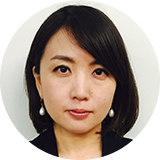Seven years of Abe
2013-2014: Abe made a comeback as prime minister in the December 2012 election, five years after he had resigned from his first term in that office. His new focus was an economic policy that came to be known as "Abenomics." He planned to revitalize the stagnating economy through support for private business. He combined this with an emphasis on national security, promising stability in a time of geopolitical change, as Japan struggled to cope with an aging population and shrinking work force.
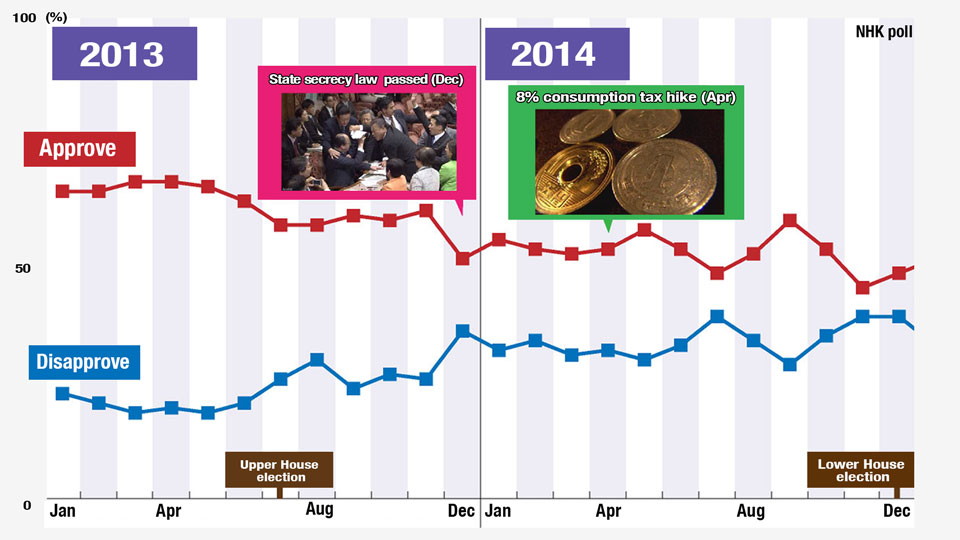
The chart above shows the Abe administration's approval rating from January 2013 through 2014.
It was at 66 percent when he returned to power in 2013.
In his first two years after returning as Prime Minister, Abe led his party through two national elections. His Liberal Democratic Party (LDP) and coalition partner Komeito won a majority in the Upper House, and kept their majority in the Lower House.
2015-2016:Buoyed by his election successes, Abe moved ahead with one of his long-standing priorities. He pushed for passage in the Diet of bills expanding the role of the country's Self-Defense Forces and allowing Japan to exercise its right to collective self-defense. He said the proposed legislation would demonstrate the strength of the Japan-US alliance , as China increases its maritime presence.
Thousands of protesters gathered in front of the Diet building in response, worried that Abe was moving forward with his controversial plan to change the Constitution. Nevertheless, the bills became law.
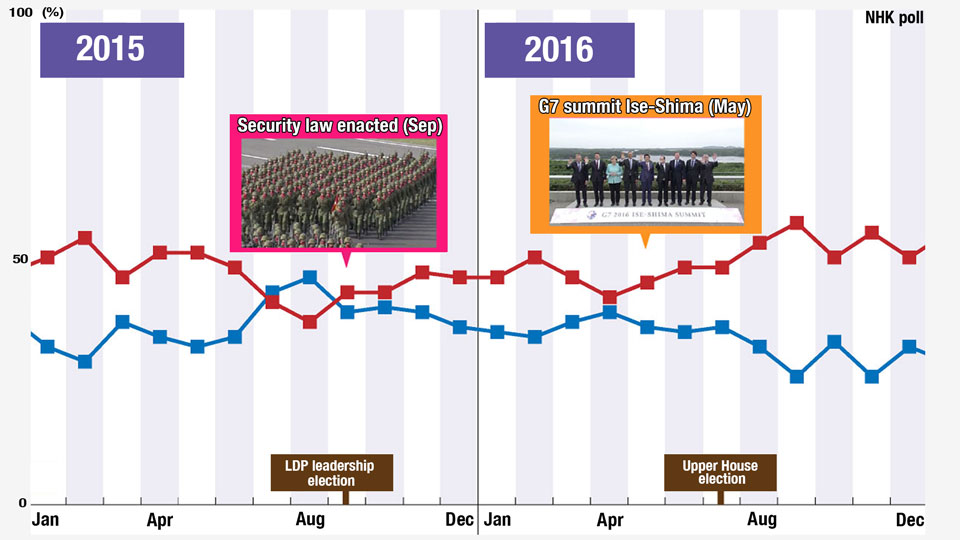
In August 2015, as the Diet was debating the administration's national security bill, Abe's approval rating fell below 40 percent. His support hovered below 50 percent until an Upper House election in the summer of 2016 pushed it back up above 50 percent.
2017-2018: A series of scandals plagued Abe and his Cabinet in 2017. The opposition parties accused the administration of peddling influence in its support for the opening of two new schools. One of the schools was headed by a long-time friend of Abe.
At the height of the scandal, Abe dissolved the Lower House and called a snap election.
But the main opposition party was fractured and unable to capitalize. It split into two parties and Abe won re-election in October 2017.
But the schools scandal continued to hound him, and the government was accused of tampering with official documents. Then, the Defense Ministry was forced to explain why it took so long to reveal the existence of documents it once said had been destroyed. In 2017, it admitted that logs of Self-Defense Forces activity in South Sudan had been found. A year later, the same thing happened with logs from Iraq.
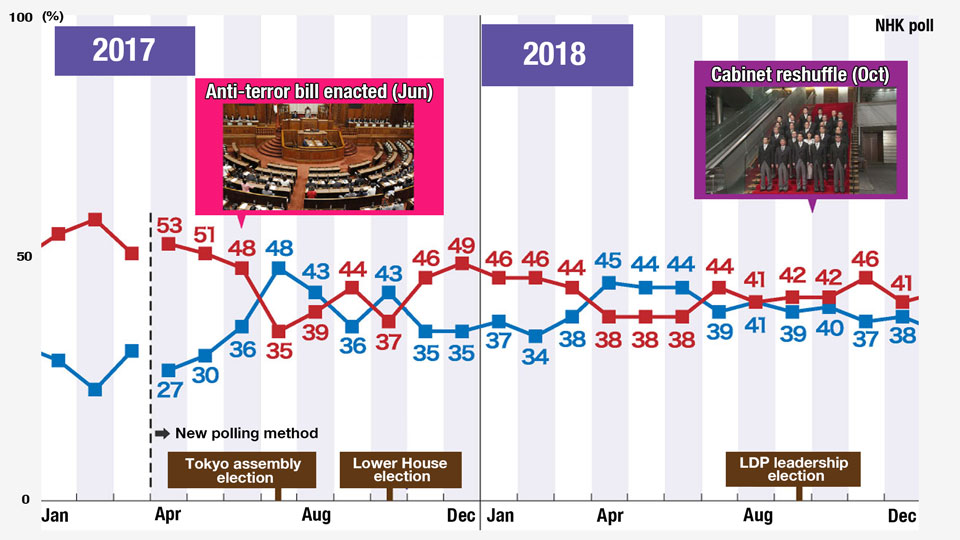
Abe's approval rating dropped below 40 percent again during this period, but he managed to turn things around and secure re-election as leader of the LDP in September 2018 for a third consecutive term. The party had changed its rules to make this possible.
Views from the veterans
A veteran LDP member says Abe learned from his first, short-lived term as prime minister in 2006-07.
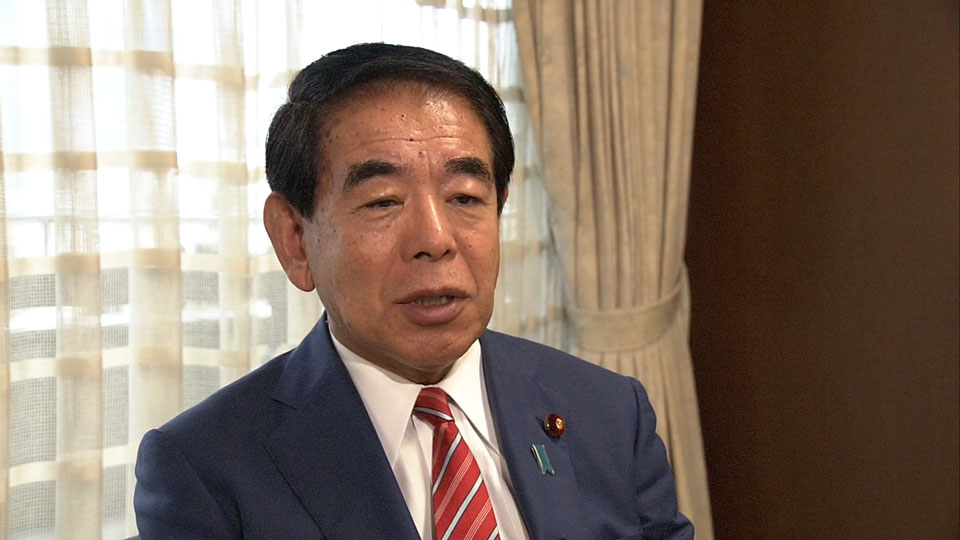
"One minister after another in the first Abe Cabinet was forced to resign," says former Education Minister Hakubun Shimomura. "Abe tried to protect them from public criticism. But the current administration has been quick to respond to scandals and minimize long-term damage."
Since his return to leadership of the LDP in 2012, Abe has led the party to victory in six national elections.
A veteran opposition lawmaker attributes Abe's staying power to his savvy election strategy and an opposition in disarray.
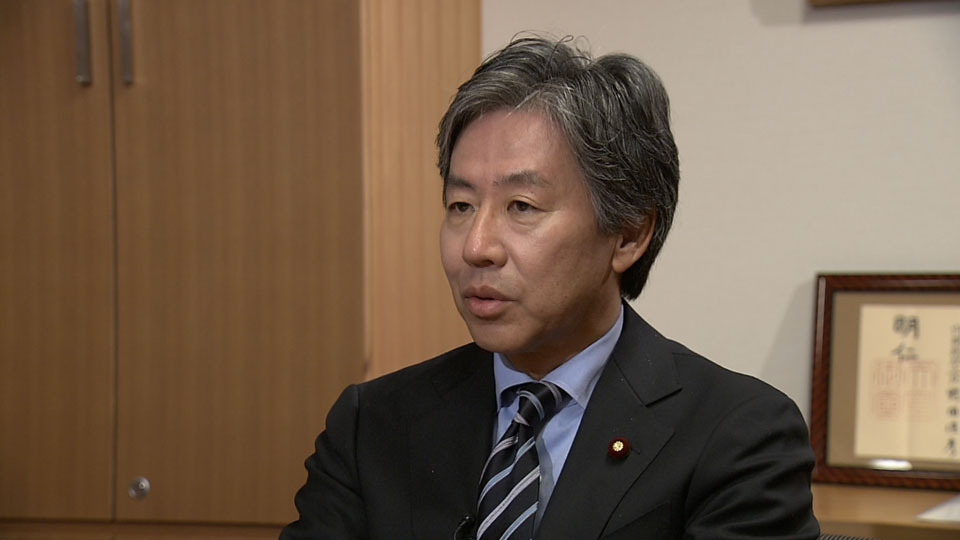
"The opposition parties didn't expect the prime minister to dissolve the chamber only two years into his term," said former finance minister Jun Azumi. "But he did, after abruptly postponing the consumption tax hike. The opposition was caught off guard, and the same thing happened in 2017."
A long-running administration: pros and cons
Former LDP vice president Masahiko Koumura cites passage of the national security bill as one of the merits of Abe's long reign. He says this has enabled Japan to exercise the right to collective self-defense.
"This is possible because the administration is strong," he said. "The public's genuine wish is that Japan should never invade another territory, or be invaded. The legislation meets that wish by strengthening the Japan-US alliance."
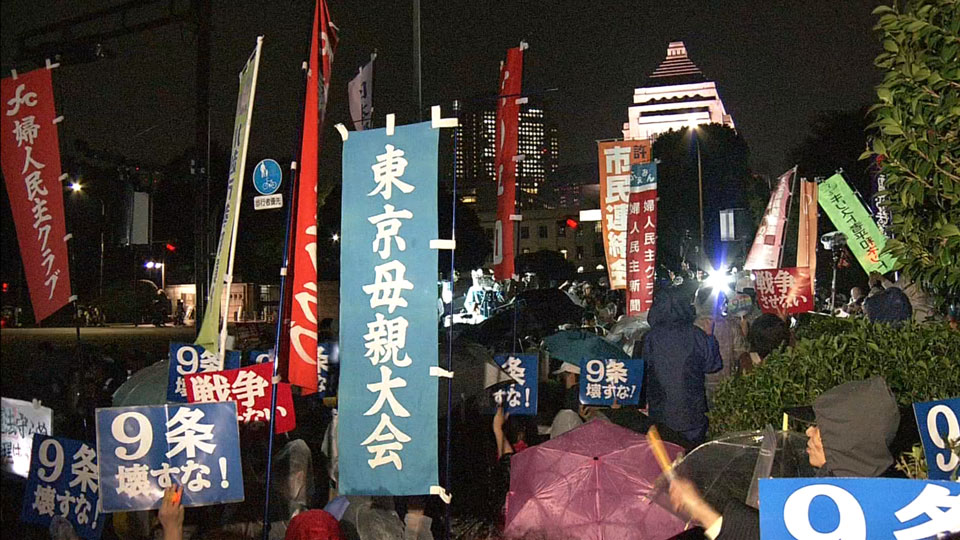
Members of the opposition parties see more downsides to a long-running administration. Azumi says bureaucrats start serving the interests of the government rather than the people.
Veteran lawmaker Ichiro Ozawa says corruption and abuse of power for personal gain starts coming out into the open.
"This is apparent in the favoritism scandal over the opening of a veterinary school headed by his friend," he said. "And in recent revelations that Abe invited large numbers of people from his constituency to a cherry blossom party at public expense."
In Abe's own words
Abe spoke to news media on Wednesday morning to reflect on his tenure and give his vision of the future.
He said he had deep regrets about his short term as prime minister in 2007, but has worked hard to end the political instability that followed.
He said the biggest challenges ahead will be managing an aging population and pulling the country out of deflation.
He also referred to his plan to amend Japan's postwar Constitution, saying he is "continuously working to create a new Reiwa era."

